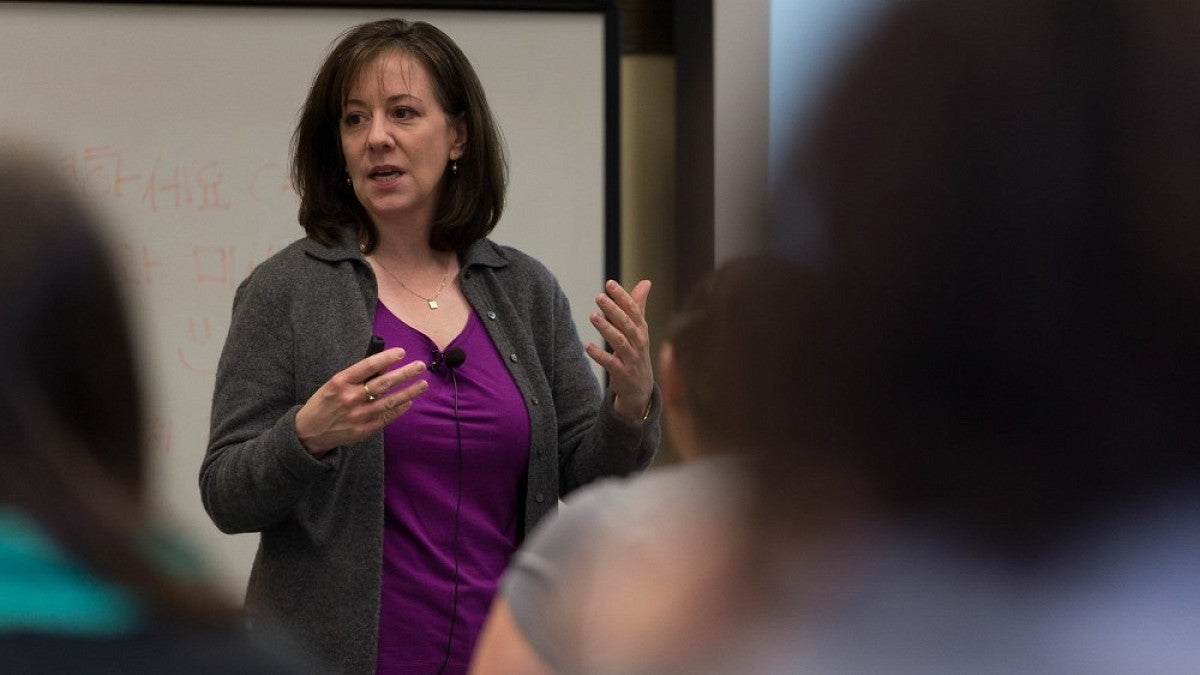Anyone who wears glasses or contacts experienced a moment when they went from seeing poorly to seeing well. All of a sudden they didn’t have to sit in front or squint anymore.
The same can’t be said about hearing loss, which affects an estimated 1 in 5 college students — as many as 5,000 just at the UO. Project AMP, for Amplify my Professor, is a universitywide effort to improve the accessibility of lectures through the consistent and correct use of microphones in large classrooms.
Led by the Communication Disorders and Sciences program at the College of Education, the project reminds professors of their responsibility to students with hearing loss, while advising students about their right to comprehend the information — a critical part of their learning experience.
Katelyn Thompson, a 2015 UO graduate, was a Communications Disorders and Sciences major who became hard of hearing as a teenager and transferred to the UO from a community college that did not use amplification equipment in large classrooms.
“At times I struggled to hear even sitting in the front of the class,” she said. “I would be stressed when I missed something, frustrated at myself and frustrated that I was trying but that it was not enough. After a full day of classes I would be physically drained. People don't realize that it takes energy to hear when you do not have hearing within the normal limits.”
Thompson had never experienced amplification in a lecture until she got to the UO, and she said it reduced her anxiety level so much that her entire body relaxed. She said as much to the professor, lecturer and Undergraduate Program Director Karen McLaughlin, who was inspired to start Project AMP.
“She told me that, in her experience, very few professors used the amplification equipment,” McLaughlin said. “Students are understandably reluctant to ask that the equipment be used, so we decided to remind everyone, especially professors, to be mindful of those with hearing loss and use the microphone.”
Most UO classrooms seating 70 or more students have sound equipment available. It consists of a small, wireless transmitter and a lapel microphone that connect to the room’s speakers and are controlled by the same Crestron panel that runs the room’s audiovisual system.
These sound systems dramatically reduce background noise, without necessarily raising the overall volume. Sound systems also maintain audio levels when the instructor is turned to the side or fully away from the class, which benefits all students.
But professors also benefit; lectures are hard on vocal cords, making it that much more difficult to project toward the end of a week. Amplification gear allows them to use their normal speaking voices.
Rhianna Stuck, a junior Communications Disorders and Sciences major, already has benefited from the faculty response to Project AMP, which trickled out late last fall and is endorsed by both the provost’s office and the Accessible Education Center.
“Project AMP has made a huge impact and completely changed the game for me,” she said. “Now, because the teachers are amplified, I don’t miss out on as many details. I don’t leave classes wondering if I missed the announcement of an assignment or a change in plans. All of the professors I’ve had the pleasure of learning from at the UO have been super helpful and willing to make accommodations for me due to my hearing difficulties.”
As part of its outreach efforts, Project AMP has posted placards near the control panel in all large classrooms at the UO. McLaughlin hopes these reminders, coupled with increased awareness about students with hearing loss and the right of all students to hear lectures clearly, will result in better comprehension and more inclusive classrooms.
—By Cody Pinkston, College of Education


